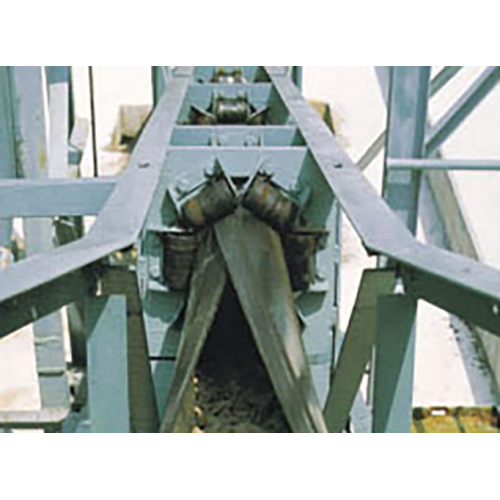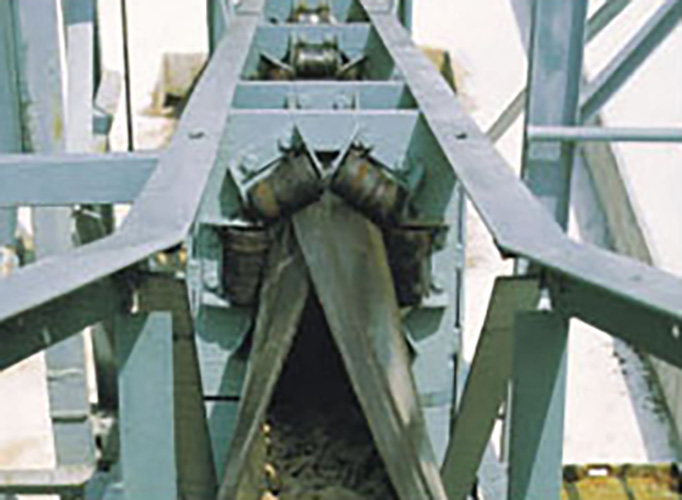




Min. Order:100 Meter
Transportation:Ocean,Land
Port:Shenzhen Port,Qingdao Port,Ningbo Port
$38≥100Meter
Model No.: TT-W001
Brand: Iron Tower
Place Of Origin: China
Processing Service: Moulding, Cutting
Brand: Iron Tower
After-sales Service: See the corresponding standard or executed according to the contract requirements
Diameter: 150
Largest Size: 0.018
Section Square100%: 0.013
Section Square75%: 30-50
The Width Of Conventional Belt Conveyor: 300-400
Belt Width: 600
Packaging: UV protection packaging cloth
Productivity: Month supply capacity of 50000
Transportation: Ocean,Land
Place of Origin: China
Supply Ability: Month supply capacity of 50000 meters
Certificate: ISO9001:2015
HS Code: 40101100
Port: Shenzhen Port,Qingdao Port,Ningbo Port
100mm Fabric Core Tubular Conveyor Belt – Efficient, Flexible & Cost-Effective Material Handling Solution
This 100mm fabric core Tubular Conveyor Belt is engineered for reliable performance in medium-duty applications where flexibility, durability, and cost-efficiency are key. Designed with a woven polyester and nylon fiber core, it offers an optimal balance between strength and adaptability—ideal for industries such as food processing, agriculture, chemicals, and mining. Whether you're handling granules, powders, or small particulates, this Tubular Belt ensures minimal spillage and efficient transport through enclosed pathways.
Key Features:
Technical Details:
The belt’s construction includes a central textile carcass that acts as the load-bearing framework, reinforced by top and bottom rubber layers tailored to resist wear, chemical exposure, and mechanical stress. The tubular configuration allows seamless integration into compact systems, reducing space requirements compared to traditional flat belts. With a nominal diameter of 100 mm, it accommodates materials up to 400 mm in size—perfect for transporting crushed ore, grains, cement, plastic pellets, or pharmaceutical powders. Its ability to form a sealed tube during operation significantly improves containment, making it a preferred choice for clean environments or regulated facilities.
Application Scenarios:
Ideal for use in internal logistics within factories, warehouses, or production lines where route complexity demands high maneuverability. Commonly deployed in vertical stacking systems, inclined conveyors, or looped configurations where space constraints exist. Suitable for conveying non-abrasive to mildly abrasive substances like sugar, flour, fertilizer, coal fines, and recycled plastics. When paired with appropriate idler sets and tensioning devices, it delivers consistent operation even under moderate impact conditions.
User Feedback Highlights:
Users frequently praise its ease of installation, low maintenance needs, and smooth operation over curved paths. Many report reduced downtime due to fewer spillages and better alignment stability compared to conventional open-belt systems. Some note improved workplace safety when handling fine materials like sawdust or ash, thanks to the closed-loop structure preventing airborne particles.
Frequently Asked Questions:
What makes this fabric core tubular belt different from steel cord types? It provides superior flexibility and lower initial cost while maintaining adequate tensile strength for most mid-range applications. Is it suitable for outdoor use? Yes, if equipped with UV-resistant covers and protected from extreme weather. Can it handle sharp-edged products? Not recommended for heavy impacts—consider adding buffer zones or using a higher-grade cover compound. How often should I inspect the belt? Regular checks every 3–6 months are advised, focusing on edge integrity, rubber wear, and tension consistency.